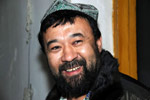Diplomatic and Military Affairs
US halts use of long-life landmines
Updated: 2011-02-15 17:54
(Agencies)
WASHINGTON - The US military has stopped using a type of landmine often condemned as a long-term threat to civilians and has ordered its stock of 1.3 million of the mines be set aside for destruction, officials say.
The decision to move ahead with a long-standing policy to end the use of persistent landmines -- those that cannot be set to self-destruct or deactivate -- by the end of 2010 comes as the Obama administration continues to study whether to join a global treaty banning anti-personnel mines.
The United States is not a party to the 12-year-old international Mine Ban Treaty and it reserves the right to use so-called smart mines that can deactivate or self-destruct.
Persistent mines are criticized because they can pose a threat to civilians long after fighting ends. Landmines and other war debris caused some 4,000 casualties in 2009, the International Campaign to Ban Landmines says.
The US Army in December directed its field operations "to assign all stocks of persistent landmines, both anti-personnel and anti-vehicle, for demilitarization (destruction)," a Defense Department spokesman said in an email on Monday.
He said a small quantity of the persistent mines would be retained for demining and counter-mine testing and training.
"We have ended the use of all persistent mines," a State Department official said on condition of anonymity, adding the Defense Department had notified personnel in the field that "these were off the table, that they're being moved to the inactive stockpile and are no longer an option for use."
While retaining stockpiles, the United States has not used persistent mines for some time. The last field of persistent mines under US control was in Guantanamo, Cuba, and was removed in 1999, the State Department official said.
"But until ... 11:59 of December 31, 2010, that option was there under the policy for the Department of Defense to lay a long-life minefield if they saw fit," the spokesman said. "That option has been removed from the table."
Under a 2004 policy put in place by President George W. Bush, US use of persistent mines was limited almost exclusively to South Korea. Anti-vehicle persistent mines could be used elsewhere only by authorization of the president.
Persistent mines not needed for the defense of South Korea were slated for destruction, the policy said. And after the end of 2010, persistent mines were not to be used anywhere.
2.5 MILLION MINES IN 2004
The United States had about 2.5 million persistent landmines in its arsenal in 2004. Since then about 1.2 million have been destroyed, the Defense Department spokesman said.
The time required to destroy the remaining 1.3 million mines "will depend on funding available and the transportation of stocks from overseas locations," he said.
While welcoming implementation of the policy on persistent mines, arms control groups noted the United States still has not joined the international treaty banning all anti-personnel mines and continues to reserve the right to use other mines.
"For people hoping for more, it's an insufficient step," said Jeff Abramson, deputy director of the Arms Control Association. "The US is still not part of the global norm."
The United States is not known to have used anti-personnel landmines since the 1991 Gulf War and abides by many provisions of the treaty. The accord is endorsed by 156 countries but Russia, China, India and the United States remain as holdouts.
President Barack Obama's administration launched a review of US landmines policy in late 2009, weighing the benefits and threats of joining the treaty. It sent representatives to the treaty review conference for the first time two years ago and is continuing to consult interested parties.
"The policy review is still under way. There is no set time for its completion," the State Department official said. "It's pretty in depth."
Regardless of the outcome, he said, the United States would continue to fund efforts to clean up landmine and other war debris. Washington has spent $1.9 billion on cleanup activities since 1993, including $161 million in the 2010 fiscal year.
Specials

Spring Festival
The Spring Festival is the most important traditional festival for family reunions.

Top 10
A summary of the major events both inside and outside China.

A role model
Alimjan Halik had been selected as the "Cyberspace Personality Who Moved the Hearts of the Chinese in 2010".